
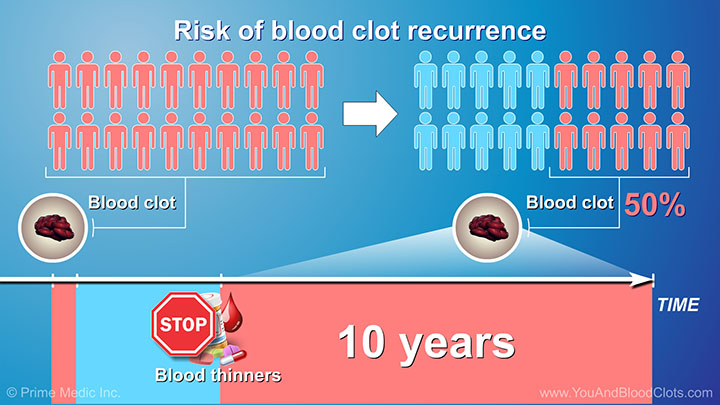
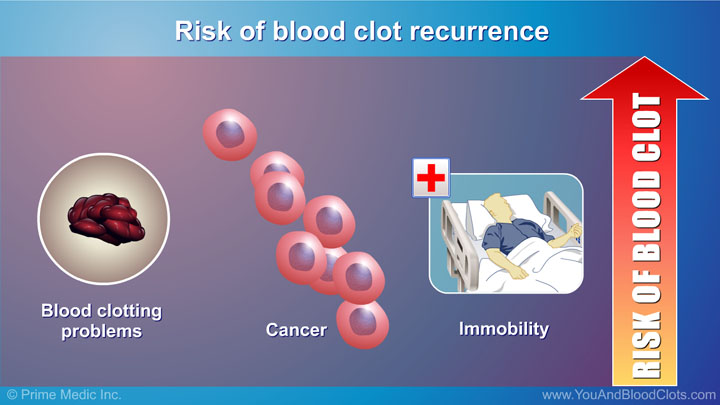
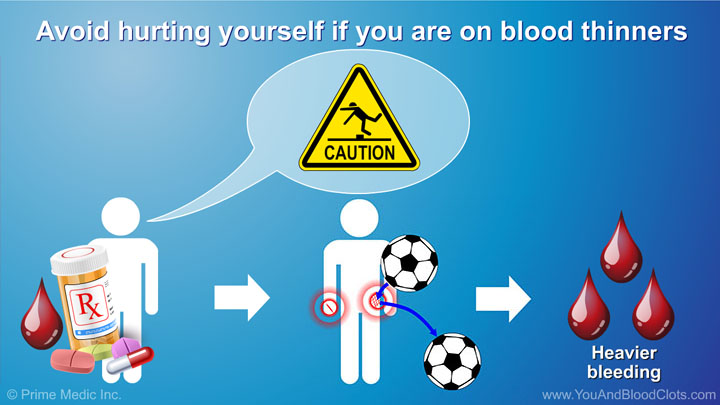
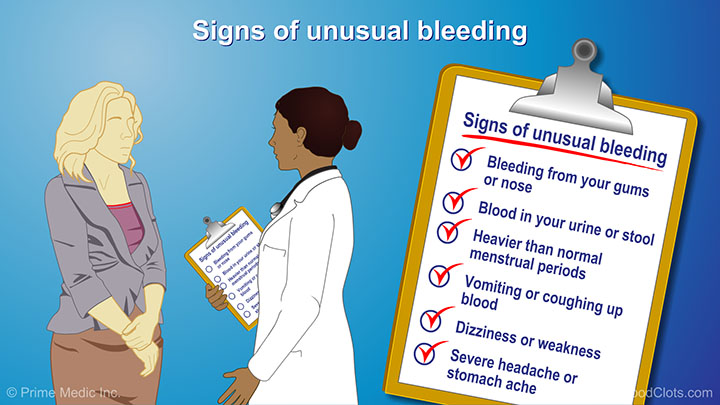
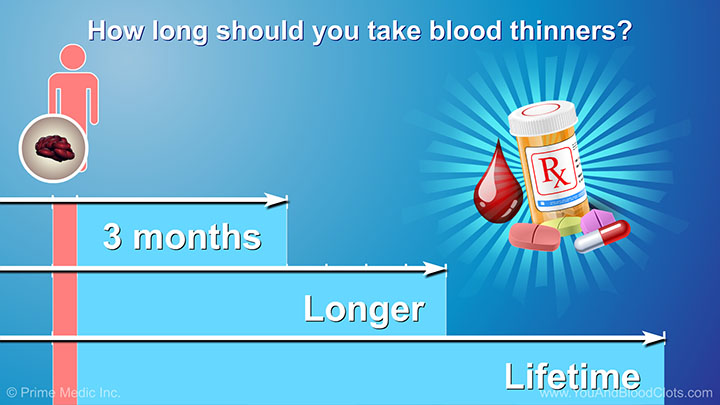
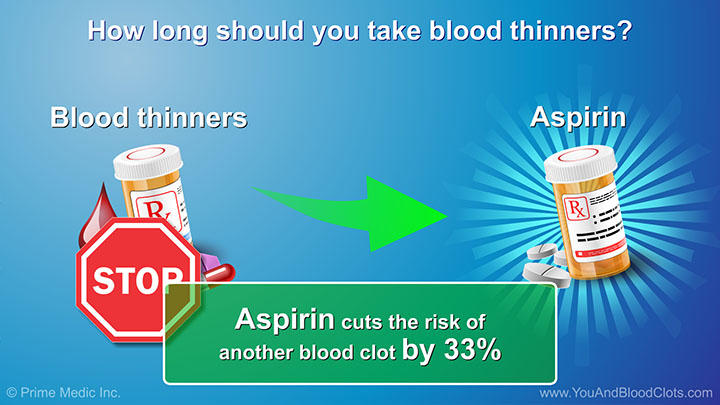
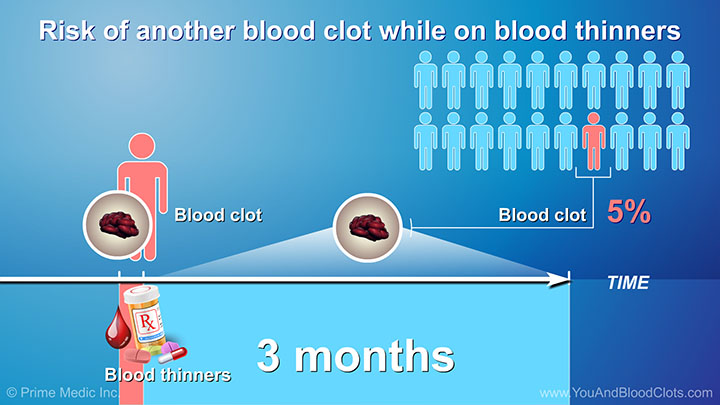
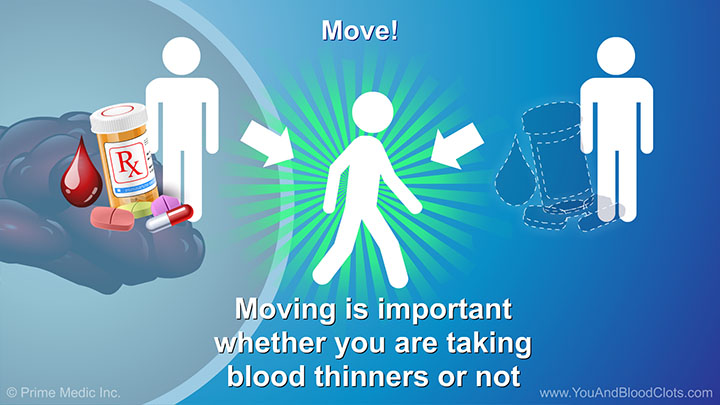
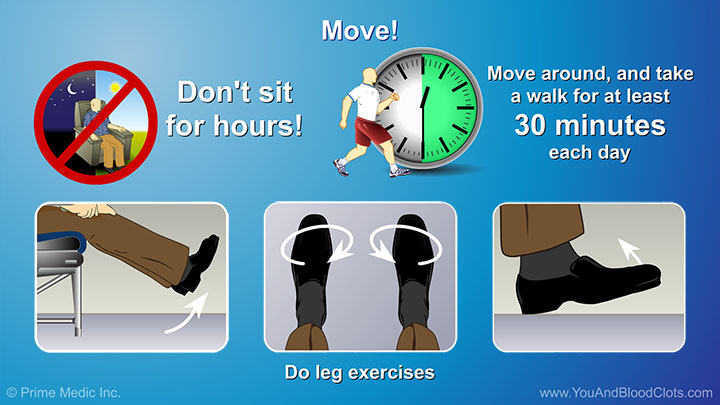
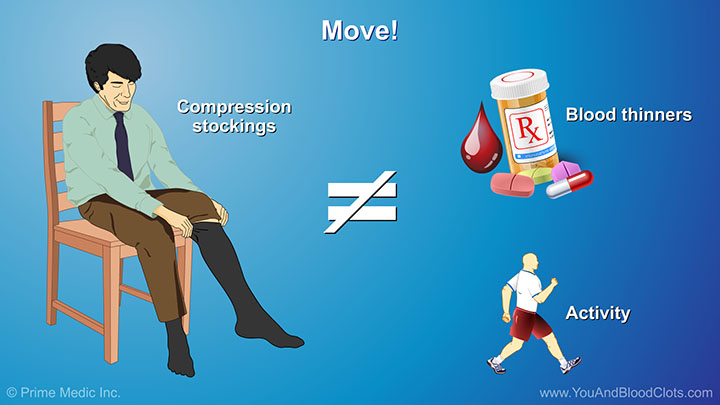
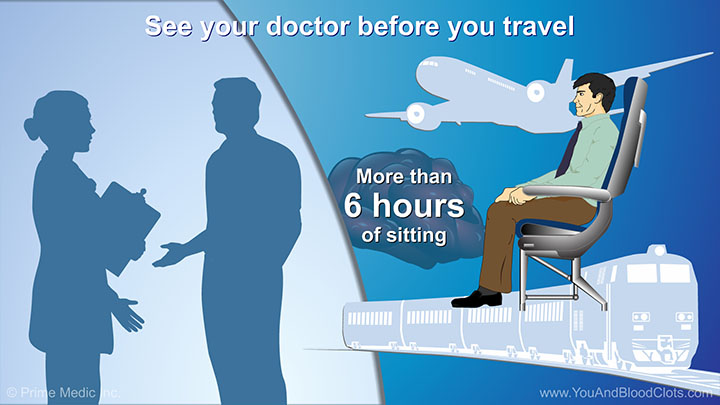
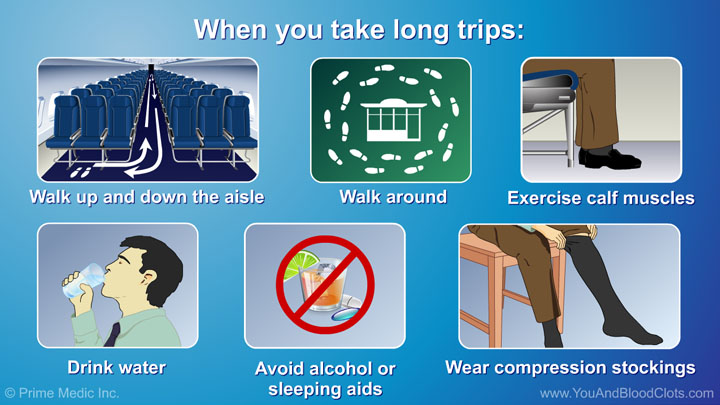
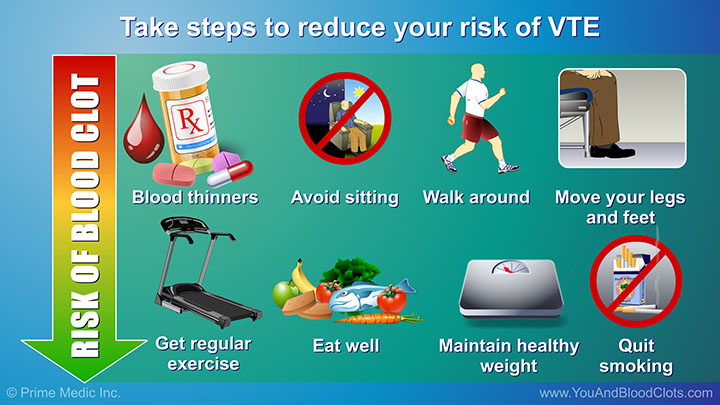
If you have had a dangerous blood clot (also known as venous thromboembolism, or VTE) you may be at risk for getting another one. This slide show explains the different steps you can take to prevent another blood clot from developing. Patients who have had a dangerous blood clot should be alert to the signs of VTE for the rest of their lives. If you have had a VTE in the past, be sure to talk to your doctor about ways you can prevent VTE and reduce your risk of life-threatening complications.
If you have had a dangerous blood clot (also known as venous thromboembolism, or VTE) you may be at risk for getting another one. This animation explains the different steps you can take to prevent another blood clot from developing. Patients who have had a dangerous blood clot should be alert to the signs of VTE for the rest of their lives. If you have had a VTE in the past, be sure to talk to your doctor about ways you can prevent VTE and reduce your risk of life-threatening complications.
In this video, pulmonologist Dr Sandra Adams explains what the risks are of getting another dangerous blood clot if you’ve had one already. Once a VTE blood clot is found and treatment has started, most patients will do very well. Still, about half of people who have had one VTE blood clot will have another within 10 years. Patients can get another blood clot even during the first 3 months they are on blood thinners. Another blood clot has the same risks as the first blood clot, including the same symptoms, and on rare occasions can be deadly. Talk to your doctor about your risk of getting another dangerous blood clot, and be aware of the symptoms to watch out for. Seek immediate medical attention if you experience any symptoms.
Certain factors can increase your risk of having another serious VTE blood clot. Dr Sandra Adams explains that the most common risk factor for having another serious blood clot is if you have had a previous blood clot. Other risk factors include genetics, diseases such as cancer, smoking, certain medications such as birth control pills, and sitting or lying down most of the time. Even if you can’t move much, it is important to try to move your arms, legs and feet and to do stretching exercises to increase blood flow and help lower your chance of getting another blood clot.
Compression stockings may be helpful to prevent or lower your chances of getting a dangerous blood clot, but as Dr Sandra Adams explains, compression stockings are not a substitute for blood thinners or physical activity. Compression stockings may reduce the risk of blood clots in some patients who have had surgery and cannot move much. Some doctors recommend compression stockings for people who take long flights to keep blood from pooling in their legs. Compression stockings can also prevent scarring in the veins from deep vein thrombosis (DVT) blood clots. However keep in mind that compression stockings are not as effective as blood thinners in preventing clots from forming.
In this video, pulmonologist Dr Sandra Adams explains that daily exercise and moving about frequently can reduce your risk of developing dangerous blood clots. Try to walk or exercise for 30 minutes every day. If you must sit for a long time, raise your legs off the floor when possible. When traveling, take regular breaks to walk and move your legs even if you stay seated. Stretching your legs and pointing and flexing your toes can help. You can do leg exercises even in bed. Raise your feet and make ankle circles or flutter your feet. Keep the blood in your legs moving.
If you have had one dangerous VTE blood clot you may be at risk for developing a second clot, therefore it is very important to work with your doctor to understand your risk factors and take steps for prevention of another clot. In this video Dr Sandra Adams talks about the different steps you can take to prevent VTE blood clots and protect your health. Regular exercise is a great way to prevent another clot, and if you smoke it’s time to quit. A few risk factors, like cancer and heart failure, will require ongoing treatment to control. Staying on blood thinner medication for the time your doctor recommends is also very important. Once you stop taking a blood thinner, your doctor may recommend taking aspirin to lower the risk of another blood clot.
In this video, Dr Sandra Adams explains that when a clot forms in a blood vessel, it can cause scarring and damage to the valves in the veins that keep blood moving in the right direction. This damage can lead to a condition called post-thrombotic syndrome. Post-thrombotic syndrome can cause swelling, pain, discoloration, and even shallow wounds on the skin, called ulcers. Dr Adams explains that about half of people who have had a blood clot in their leg will have some degree of post-thrombotic syndrome. Medication and compression stockings can reduce the risk of developing the syndrome.
Patients who have had a dangerous blood clot should be alert to the signs of VTE for the rest of their lives, explains expert pulmonologist Dr Sandra Adams. If you have any symptoms, call your doctor immediately. Not every patient who has had a blood clot will get another one, but many will. Be sure to talk to your doctor about ways you can prevent having another dangerous blood clot. To reduce your risk of another blood clot, you should:
Jointly provided by Postgraduate Institute for Medicine, WipeDiseases Foundation and Prime Medic Inc.
This activity is supported by an independent educational grant from Daiichi Sankyo.
This website is part of the Animated Patient™ series developed by Prime Medic Inc., to provide highly visual formats of learning for patients to improve their understanding, make informed decisions, and partner with their healthcare professionals for optimal outcomes.